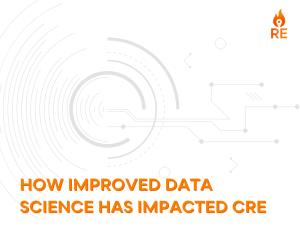Feature
The Importance of Corporate Real Estate Benchmarking
Benchmarking – the process of comparing your organization’s data and key performance indicators with those of your industry peers – is nothing new. You can find varying applications in the real world: medical practices benchmark their patient wait time and quality of care, sports teams and players are compared to determine top performers, and call centers may benchmark their customer satisfaction and call length – all with the purpose of determining where they stand and bringing opportunity and risk indicators to the surface.
With the corporate real estate landscape shifting rapidly in front of us, the recent uptick of software solutions that drive data-based decisions, and the recent digitization of corporate real estate management and strategy, gathering and benchmarking data from your real estate portfolio is more important than it’s ever been. Adopting data-driven decision-making practices helps your team stay informed and adapt to your evolving portfolio and space needs.
With the help of real estate benchmarking software, you can collect, compare, and leverage meaningful insights about your buildings through a vetted and validated process. As the market changes, both naturally and as a result of COVID-19, are you prepared to answer the tough questions?
How to lay the foundation for real estate benchmarking
The more corporate occupiers begin to utilize business intelligence solutions and smart building technologies, the more data they receive – which, in turn, means an increased emphasis on the interpretation and deployment of said information. More data is not always better, and real estate professionals are quickly being forced to drive business cases and solutions based on a foundation of sand. Before beginning the benchmarking process, you have to take stock of your data inventory. Understanding where the relevant information lives in your organization and how you’ll interpret its meaning is the first step in the process.
In order to truly unlock value from the benchmarking process, you will need to collect granular data that is trusted, standardized, and ready for distribution. This requires a single source of truth that ties together all aspects of the portfolio in a trusted, validated and clear system.
Catch up on the latest from RefineRE:
Why Benchmark Your Buildings?
·Attainable targets to guide future investment
·Historical year-over-year comparison
·Performance measurement relative to your peers and the market
·Organization in a single source
When real estate strategy is based on hearsay and spread across varying internal and external resources, it can be hard to determine the performance of your real estate portfolio, and sometimes even a specific building’s trends.
It’s even more difficult to find detailed information that can drive asset-related decisions. For occupiers, knowing where they are performing well and where there is room for improvement is a good starting point, but a more granular benchmarking approach allows for fact-based strategy. With the option to drill down on metrics across geography, asset class, ownership type, and facility size, you can begin to derive insights that will assist in strategic planning.
For example, if a large corporate organization wanted to perform an assessment on their headquarters and the performance of its facilities management spend, they would require additional related corporate real estate benchmarking information across their building, portfolio, and region. This may include:
·A breakdown of all FM-related spend allocated to the correct cost center
·Currency standardizations
·Standardized definitions
·Tenant satisfaction with wellness offerings
Finer details about all aspects of the buildings you occupy can resolve three major business issues for CRE: cost reduction, strategic decision making, and consolidated information. For attraction, this may include recommending cost-cutting strategies not only based on your best performing sites, but also on metrics you know are attainable based on the performance of your best-in-class peers. For strategic decision making, benchmarking allows your team to present leadership with data-driven metrics, taking the emotion out of the decision-making process.
Leverage the right technology
With a general lack of data validation parameters and so many potential data points out there for office buildings, CRE property teams require the right technology and analytics expertise to achieve their most pressing business goals. First and foremost, they need a single source of truth. This means corporate occupiers require a CRE-specific data model that can help aggregate insights across their portfolio’s people, spaces, and technologies – such as spend data, utilization information critical dates, and more – all in one place.
Having a connected and standardized analytics offering like the RefineRE Business Intelligence Suite helps occupiers uncover insights, identify risk and opportunity as they relate to real estate assets, take action, and make intelligent decisions across their portfolio. In order to quickly access a consolidated view of the metrics that really matter, CRE teams need end-to-end solutions that can achieve the above and more.
The combination of real estate benchmarking and analytics that tie back to key performance indicators will ensure that landlords can efficiently organize their building data while comparing it to a growing industry database of CRE insights that will accelerate best-in-class experiences for their tenants.
Not benchmarking yet? Contact us to learn more about laying the foundation for this critical component of corporate real estate strategy.
Catch up on the latest from RefineRE:
Schedule a consultation with RefineRE
Here's what you can expect:
- ‣ A 15-minute call
- ‣ Identify your biggest challenges
- ‣ Explore automated solutions to optimize your strategy





